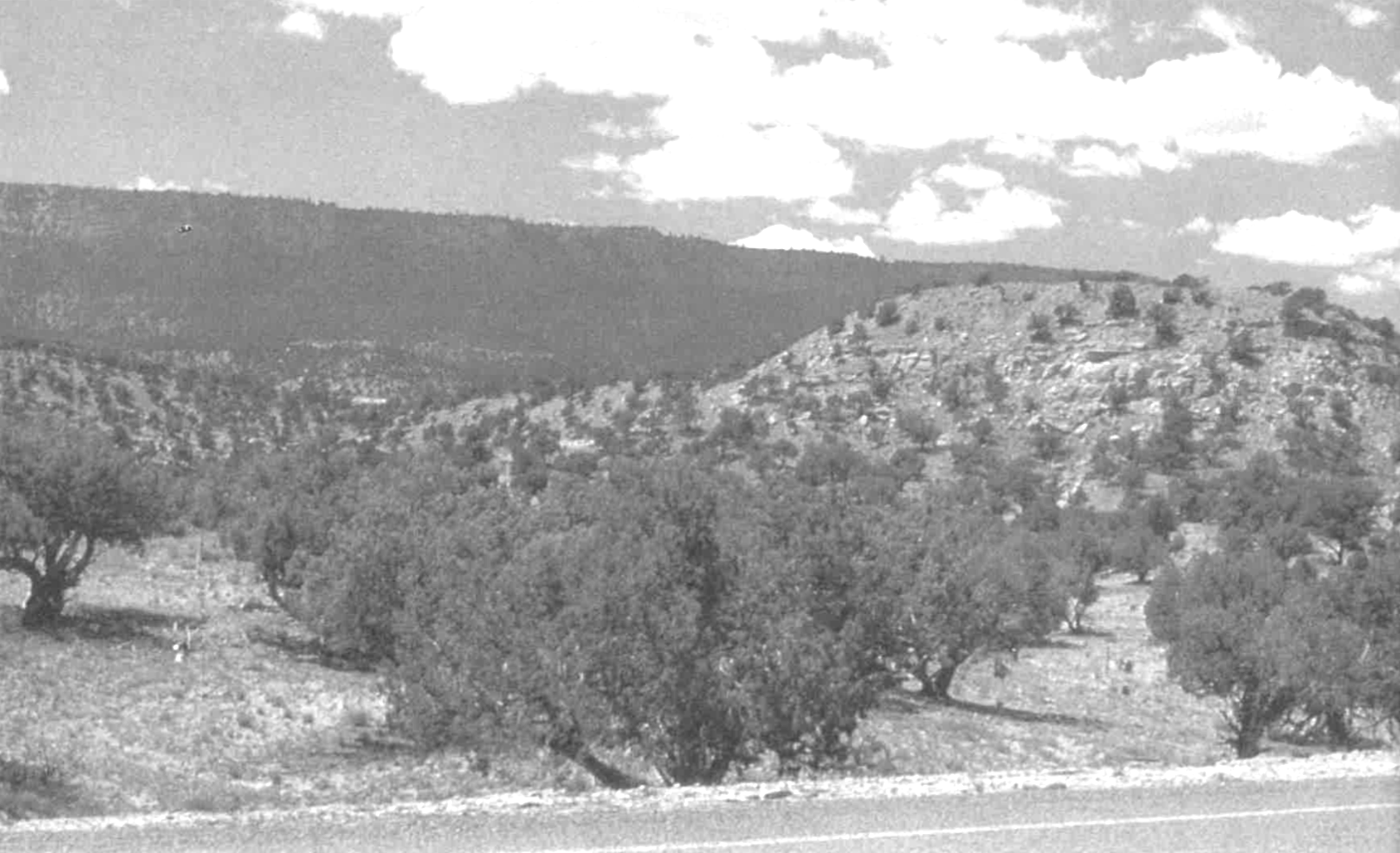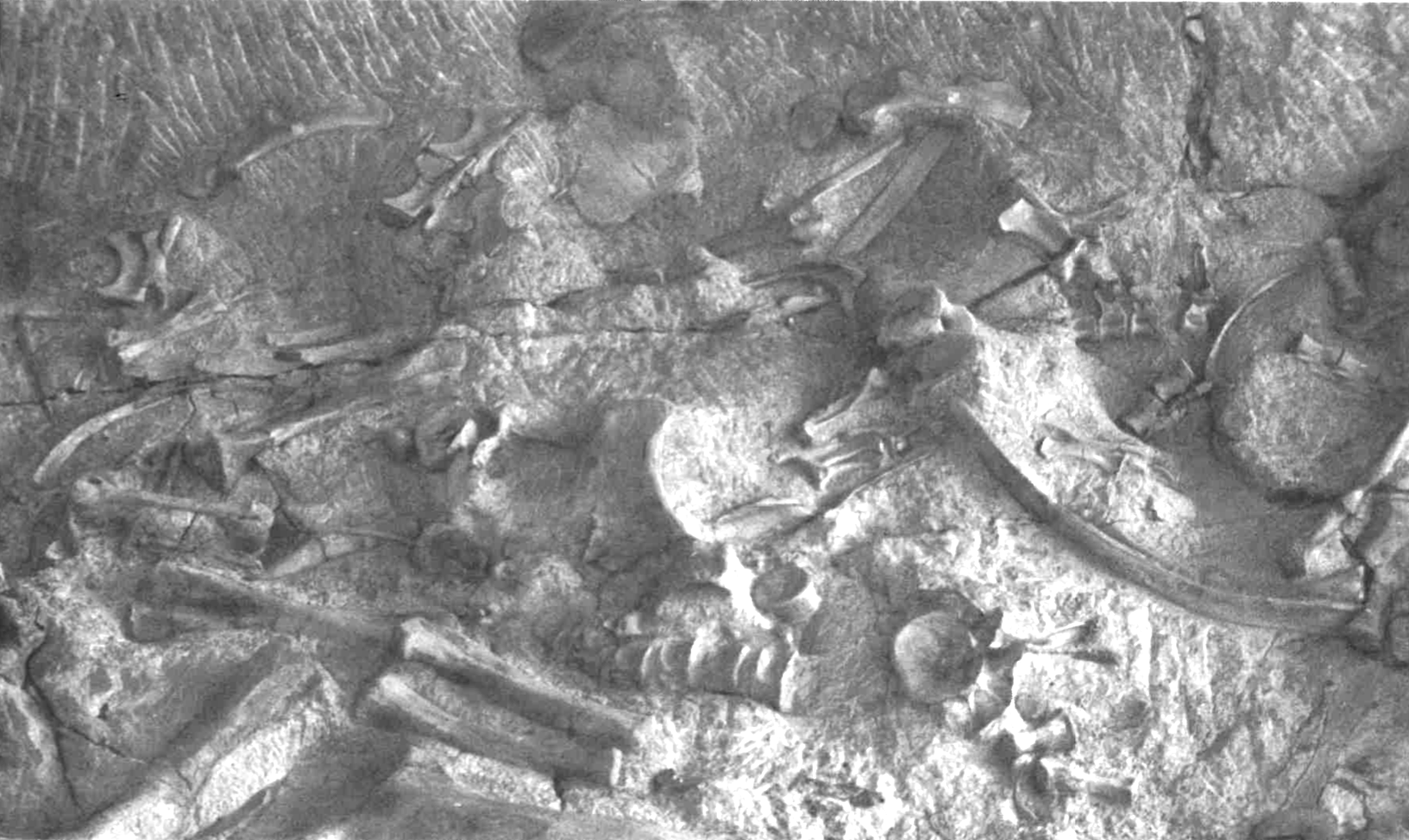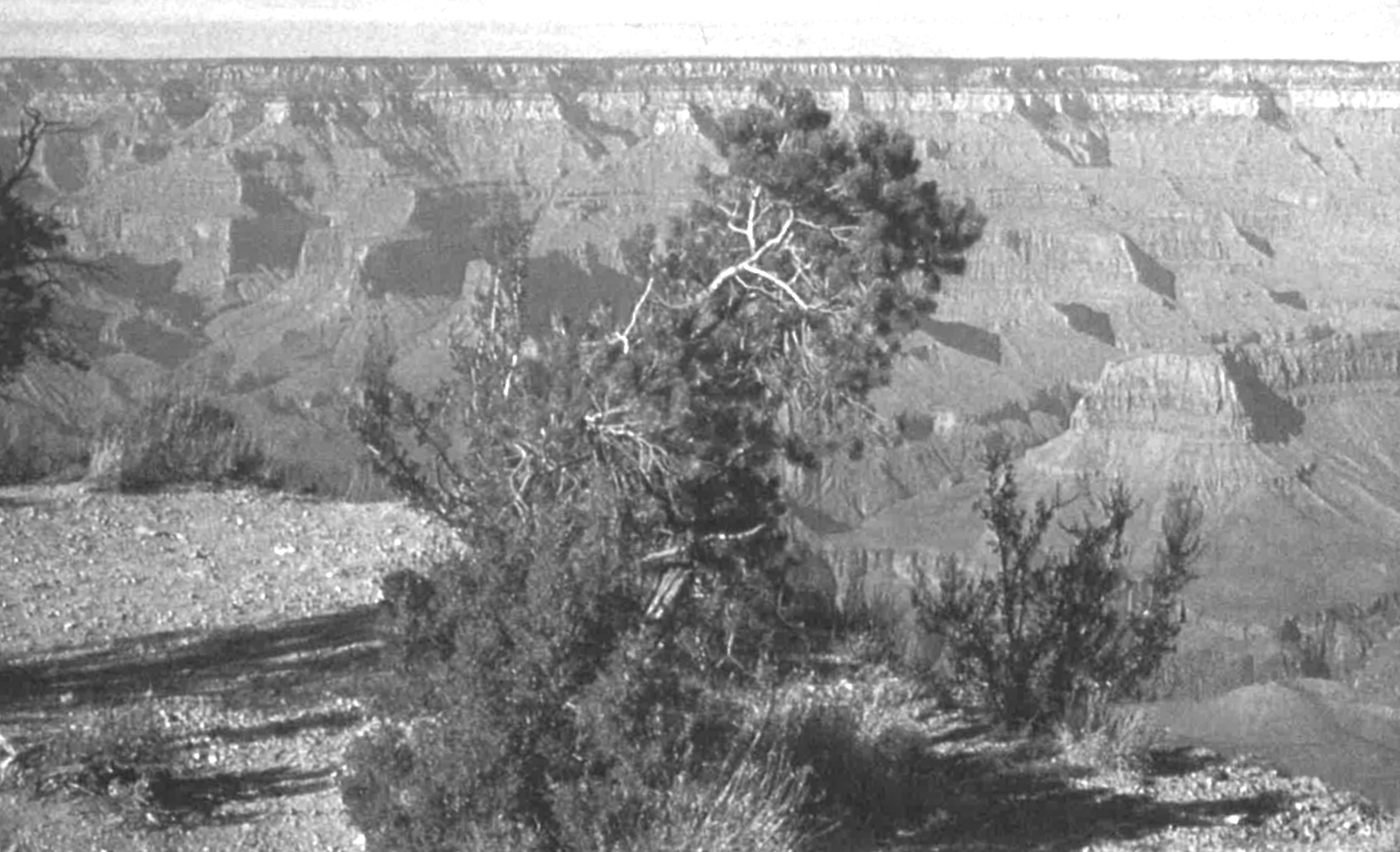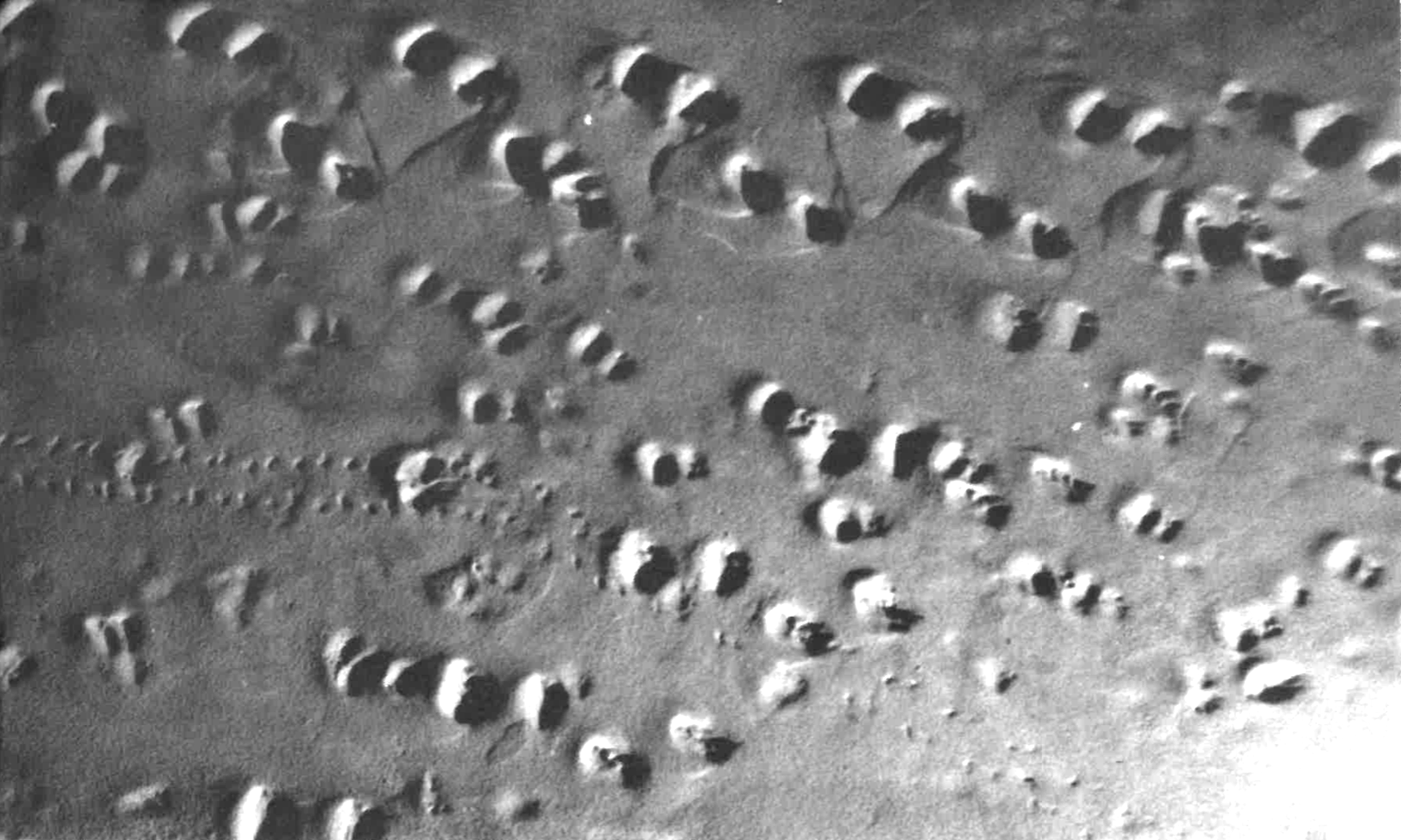©Copyright 2018 GEOSCIENCE RESEARCH INSTITUTE
11060 Campus Street • Loma Linda, California 92350 • 909-558-4548

INCOMPLETE ECOSYSTEMS
by Ariel A. Roth
Geoscience Research Institute
Related page | REACTION |
WHAT THIS ARTICLE IS ABOUT
Animals depend on plants as a source for food. Without food animals cannot survive. When the fossil record is examined, one finds some assemblages that are ecologically incomplete. In particular, in some localities there does not seem to be enough plants to support the animals represented as fossils. How could the animals survive the long ages postulated without adequate food? A model involving transport, sorting and deposition by the waters of the Genesis flood can resolve the dilemma.
All living organisms need a source of energy to remain alive. There are many ways whereby they obtain this energy by following various pathways of the food chain. Plants are by far the main primary producers of food. They take approximately 1% of the light energy from the sun that falls on them and convert it to organic compounds that serve as food for many animals and also for some non-photosynthetic organisms such as mushrooms. On the other hand, carnivorous animals obtain their energy by eating other animals, and a few carnivorous plants eat animals. Because of a variety of energy relationships, the food chain is sometimes referred to as the food web. The food chain can be generalized to the simple fact that almost all animals obtain their energy directly or indirectly from plants. An exception would be the large, 1.3-meter tubeworms that live deep in the ocean along warm water vents where there is no light. They obtain their energy from bacteria which in turn obtain their energy from sulphur compounds; but on land, animals obtain their energy from plants. Without plants, most other organisms cannot survive.
The fact that animals need plants poses a problem for the evolutionary model, since the record of past life sometimes reveals non-viable "ecologic systems." The discrepancy is especially striking where we find few or no fossil plants to serve as food for fossil animals that are well represented. When you consider, as evolutionary theory proposes, that these incomplete environments would have existed for millions of years, you have a problem. How did the animals survive?
Those who believe in creation and the biblical flood see this as evidence that various kinds of organisms might have been transported and sorted by the waters of the flood. Lighter plant material could be transported away from the animals, to be later changed to coal. Some of the unusually thick coal beds we find today suggest unusual accumulation conditions, as would be expected in a flood. One example is found in Australia, where the Morewell coal seam reaches at least 165 m (540 ft) in thickness.
The rock layers known as the Morrison Formation (Figure 1) of western North America appear to present a vast inadequate ecological system. The Formation has an average thickness of 100 m (300 ft) and extends over 1,000,000 km2 (400,000 mi2), being found from Canada to Texas. It is most famous because it harbors a number of important dinosaur bone localities. It has been one of the world's richest sources of dinosaur fossils (Figure 2). Yet plants are rare, notably where the dinosaurs are found.[1] What did these behemoths eat? The paleontologist Theodore White comments that: "Although the Morrison plain was an area of reasonably rapid accumulation of sediment, identifiable plant fossils are practically nonexistent."[2] He further muses that by comparing to elephants the dinosaur Apatosaurus "would consume 3½ tons of green fodder daily." If dinosaurs were living where their fossils are now found, what did they eat if plant fossils are so rare? It would take a large number of plants to support just one dinosaur.


Other investigators have also commented on this lack of plant fossils. One states that the Morrison in Montana "is practically barren of plant fossils throughout most of its sequence,"[3] and others comment that the "absence of evidence for abundant plant life in the form of coal beds and organic rich clays in much of the Morrison is puzzling."[4] These workers also express their "frustration" because 10 of 12 samples studied microscopically were essentially barren of the "palynomorphs" (pollen and spores) which are produced by plants. With such a sparse source of energy, one wonders how the large dinosaurs could survive the assumed long ages while the Morrison Formation was being deposited.
To explain the dilemma, the suggestion has been made that plants were not preserved as fossils. This does not seem to be the case, since a number of animals and a few plants are well preserved. The Morrison might not be a place where dinosaurs lived, but instead represents a flood burial ground for dinosaurs, while plants were transported elsewhere.
Even more surprising are the data from the Coconino Sandstone, which is the widespread light-colored rock unit seen near the top of the rim of the Grand Canyon in Arizona (Figure 3). This unit, which averages around 150 m (500 ft) in thickness is spread over many thousands of square kilometers. Many hundreds most likely thousands of footprint trackways (Figure 4), probably made by amphibians or reptiles, occur in the lower half of the Coconino. Yet it appears that no plants were present. Aside from the footprints, only a few worm tubes and invertebrate tracks have been reported.[5] What did the animals who made all these tracks feed on? They had to have some food, but it is not there. If simple footprints are well preserved, so should the imprints of leaves and stems of plants, if they were present.


Almost all of the trackways in the Coconino indicate that the animals were going uphill,[6] and this same situation is found in the De Chelly Sandstone formation to the east.[7] The animals forming the tracks in the Coconino have not been found, but their tracks are well preserved and abundant. Furthermore, there is strong evidence that these trackways were formed underwater,[8] instead of the usual interpretation that they were formed on desert dunes. Is it possible that all these uphill trackways could have been formed by animals escaping the waters of the flood?
Regardless of these details, the absence or scarcity of plants in the Coconino Sandstone and Morrison Formation illustrate incomplete ecosystems which would not have been able to support normal animal life over the millions of years purported for the deposition of these geologic layers. The data seem to fit better with the biblical model of the flood than with the evolutionary model of long ages of slow development.
ENDNOTES
[1]Dodson, P., A. K. Behrensmeyer, R. T. Bakker and J. S. McIntosh. 1980. Taphonomy and paleoecology of the dinosaur beds of the Jurassic Morrison Formation. Paleobiology 6(2):208-232.
[2]White, T. E. 1964. The dinosaur quarry. In E. F. Sabatka (ed.), Guidebook to the Geology and Mineral Resources of the Uinta Basin, pp. 25-26. Intermountain Association of Geologists, Salt Lake City. See also: (a) Peterson, L. M. 1982. Stratigraphy and depositional environments of the Upper Jurassic Morrison Formation near Capitol Reef National Park, Utah. Brigham Young University Studies in Geology 29(2):1-12; and (b) Peterson, F. and C. E. Turner-Peterson. 1987. The Morrison Formation of the Colorado Plateau: recent advances in sedimentology, stratigraphy, and paleotectonics. Hunteria 2(1):1-18.
[3]Brown, R. W. 1946. Fossil plants and Jurassic-Cretaceous boundary in Montana and Alberta. American Association of Petroleum Geologists Bulletin 30:238-248.
[4]Dodson et al., pp. 218 and 229 (see Note 1).
[5](a) Middleton, L. T., D. K. Elliott, and M. Morales. 1990. Coconino Sandstone. In S. S. Beus and M. Morales (eds.), Grand Canyon Geology, pp. 183-202. Oxford University Press, New York and Oxford; (b) Spamer, E. E. 1984. Paleontology in the Grand Canyon of Arizona: 125 years of lessons and enigmas from the late Precambrian to the present. The Mosasaur 2:45-128.
[6]Gilmore, C. W. 1927. Fossil footprints from the Grand Canyon: second contribution. Smithsonian Miscellaneous Collection 80(3):1-78.
[7](a) Vaughn, P. P. 1973. Vertebrates from the Cutler Group of Monument Valley and vicinity. In H. L. James (ed.), Guidebook to Monument Valley and Vicinity, Arizona and Utah, pp. 99-105. New Mexico Geological Society; (b) Lockley, M. G. and A. P. Hunt. 1994. Abundant ichnofaunas from the Permian De Chelley Sandstone N.E. Arizona. Geological Society of America Abstracts with Programs 26(7):A374.
[8](a) Brand, L. R. 1978. Footprints in the Grand Canyon. Origins 5:64-82; (b) Brand, L. R. and T. Tang. 1991. Fossil vertebrate footprints in the Coconino Sandstone (Permian) of northern Arizona: evidence for underwater origin. Geology 19:1201-1204.